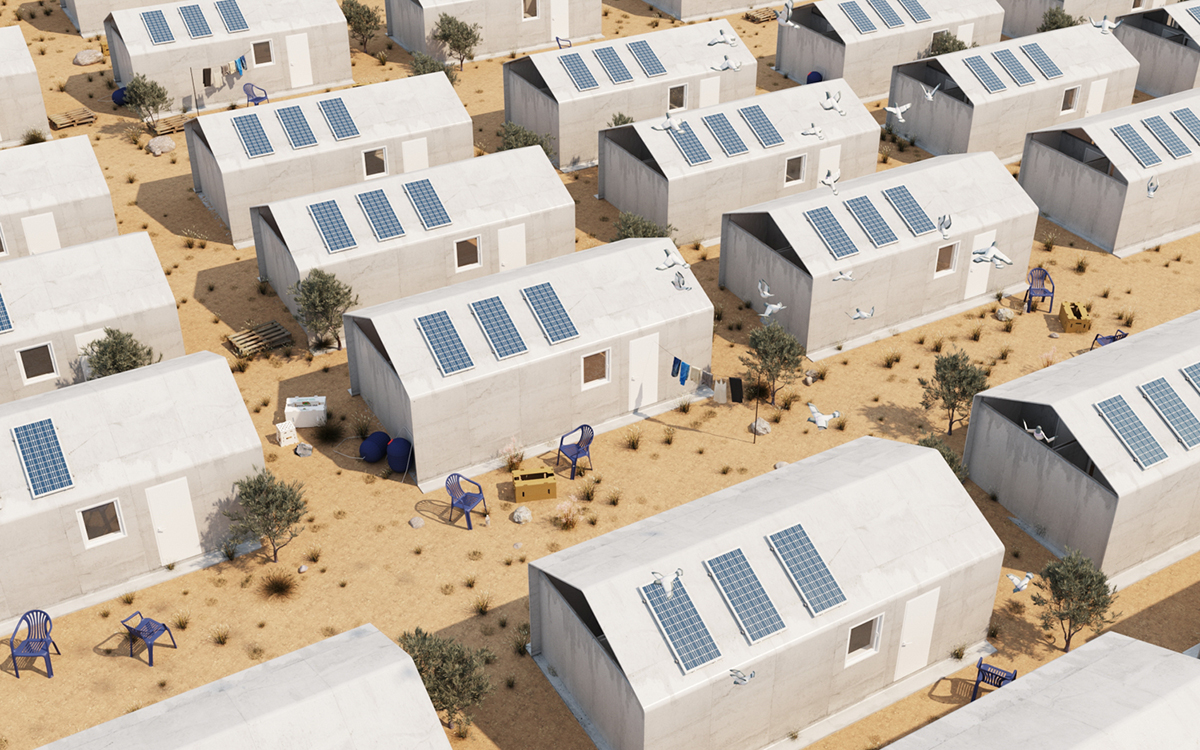While refugee camps are generally designed to be temporary, they often end up staying up for many years and become full, functioning cities in their own right, housing generations of people—Dheisheh camp, in Palestine, for example has been continuously occupied since 1949. However, because the materials they are built with—often just tents or tarps over metal frames—are generally intended for quick deployment and a limited lifespan, it is becoming just one of many problematic facets of housing displaced peoples.
Cutwork, an architecture and design studio based in Paris and Amsterdam, has developed a concept for quick-to-build, affordable, and durable refugee shelters that can be set up by just two people. Working with the building materials company Cortex Composites, they’ve created plans for homes that can be assembled by two people in just 24 hours.
Cortex, which is classified as a Geosynthetic Cementitious Composite Mat, is a concrete-impregnated textile that can be shipped flat and simply rolled out and hardened with the addition of water, no additional equipment or specialized construction experience necessary. The half-inch-thick shell then hardens within a day and, the company claims, can last for as long as 30 years with compressive strength twice that of average concrete all while being as much as 90 percent less carbon-intensive.
[interstitial]
Cutwork’s design for the Cortex Shelter would roll these concrete textiles over bendable metal-tube frames. Washable insulation panels would be added to the shelter’s interior and the design has high windows that allow both natural light and privacy. Cutwork also imagines solar panels being placed on the roof to generate electricity, and, in theory, should there be the infrastructure to support them, there would be ample space for kitchens and bathrooms.
While the Cortex Shelter is designed to be a repeatable home, the firm also imagines that in supporting the urbanization of refugee communities, schools, shops, other structures could be built with the same technology.
Cutwork suggests that Cortex could be used to build permanent schools, shops, and even a sports stadium. While they admit urbanizing refugee settlements is not the ideal solution to this global crisis, the company believes that it can be one tool among many in making safer, more sustainable, and pleasant lives for the tens of millions of global refugees.
